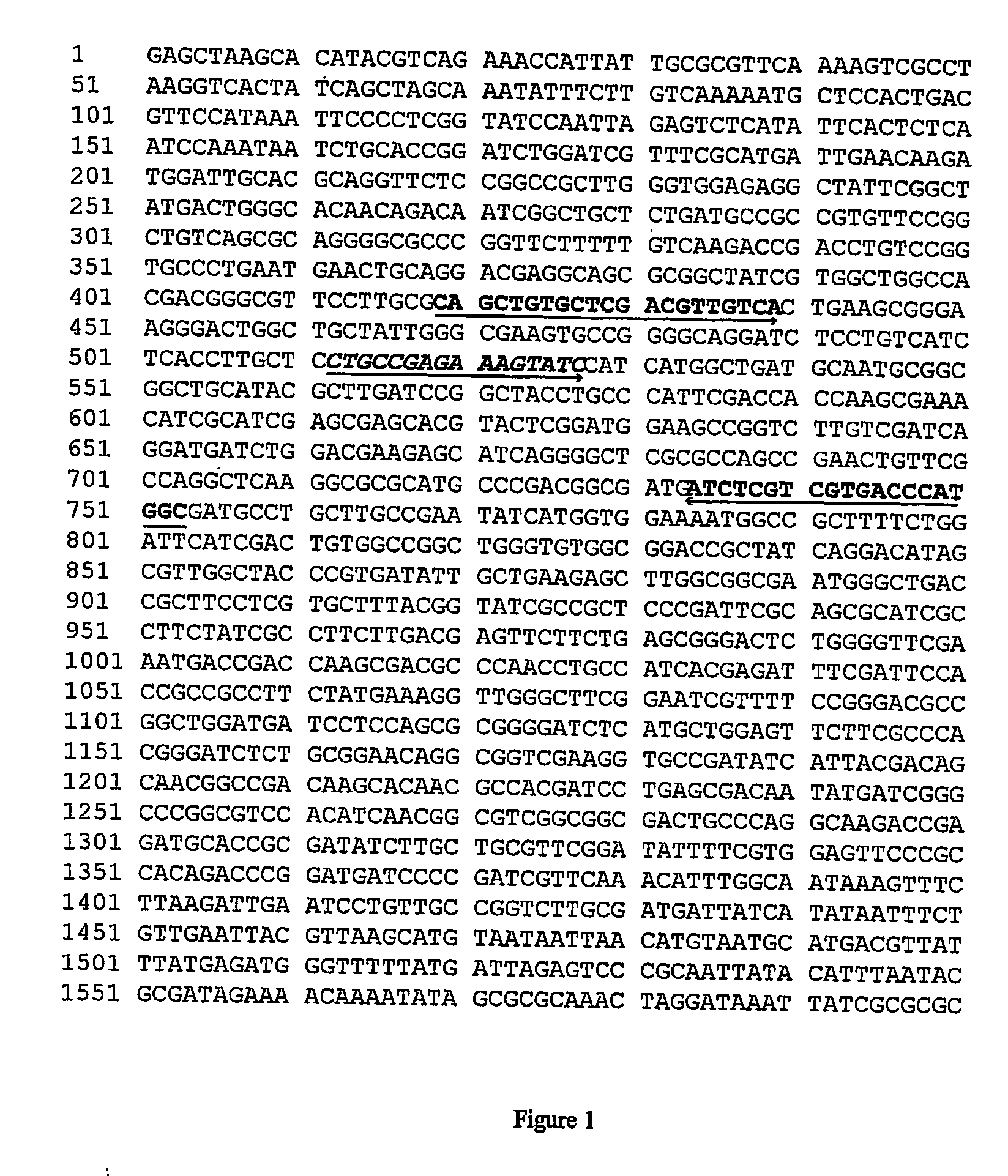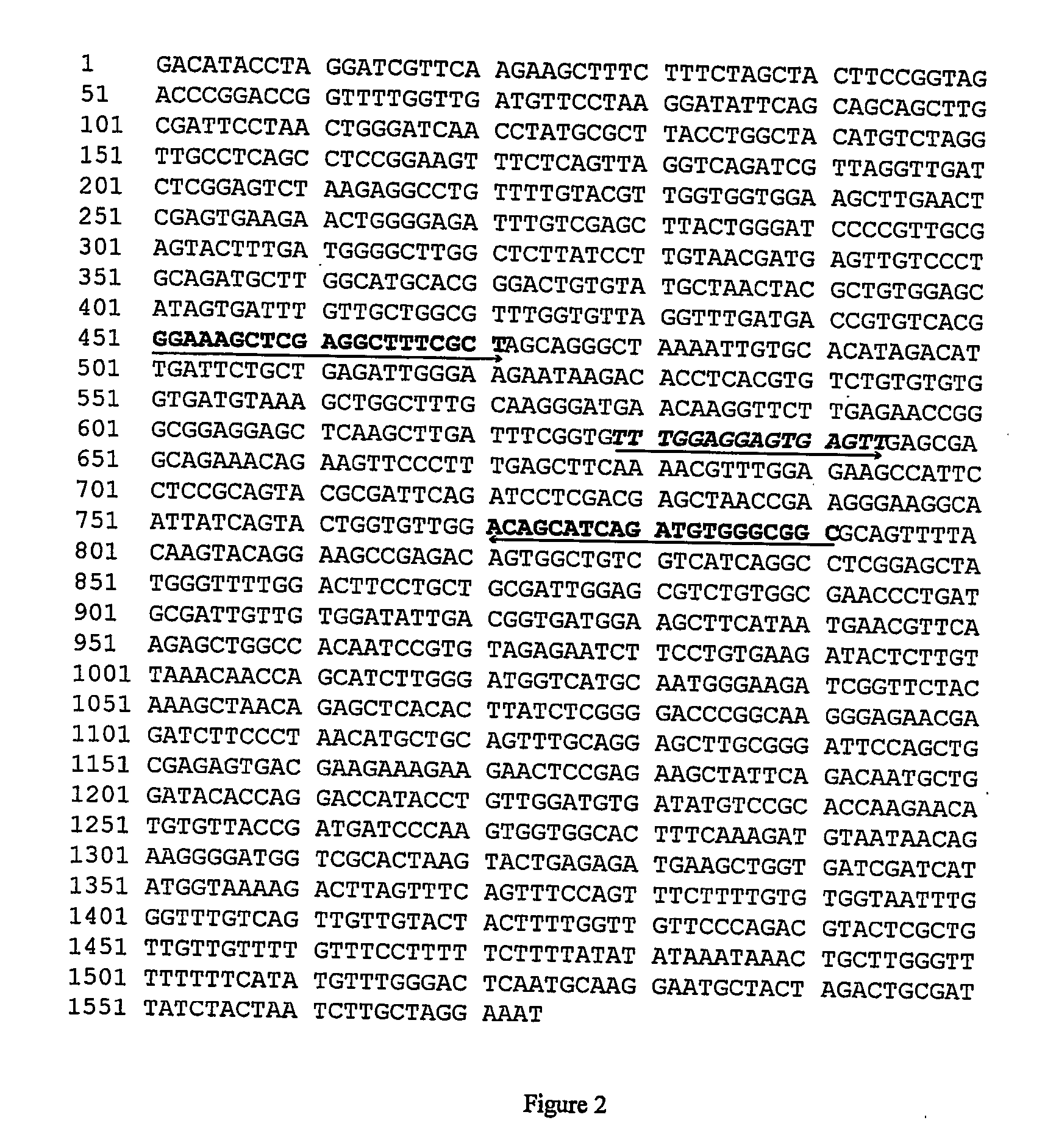Methods for relatvie quantification of specific nucleic acid sequences
a quantification method technology, applied in the field of relatvie quantification of specific nucleic acid sequences, can solve the problems of no endogenous control, limited resolution, time-consuming and poorly adaptable to a high-throughput production environmen
- Summary
- Abstract
- Description
- Claims
- Application Information
AI Technical Summary
Benefits of technology
Problems solved by technology
Method used
Image
Examples
example 1
Relative Quantification of the Initial Copy Number of the Transgene NPTII in Canola Plants
Materials and Methods
[0077] Approximately 30 g of frozen tissues are ground in 100 ml of extraction buffer (100 mM Tris, 70 mM EDTA, 9.11 %(w / v) sorbitol, 0.38%(w / v) sodium metabisulfite, 2%(w / v) CTAB) and filtered with cheesecloth. The filtrate is centrifuged at 5,200 RPM for 15 min at 4° C. and the pellet resuspended in 15 ml of resuspension buffer (100 mM Tris, 70 mM EDTA, 9.11 %(w / v) sorbitol, 0.38%(w / v) sodium metabisulfite, 2%(w / v) CTAB, 0.01 mg / ml RNAse). Then 15 ml of lysis buffer (200 mM Tris, 70 mM EDTA, 2 M NaCI) and 3 ml of 5%(wlv) sarkosyl is added to the tube, mixed by inverting a few times and incubated 15 min at 60° C. Following this, 18 ml of chloroform / isoamyl-alcohol(24:1) is added, mixed by inverting a few times and the mixture is then spun at 6,000 RPM for 10 min at 4° C. The aqueous phase is transferred to a fresh tube and the chloroform / isoamyl-alcohol ...
PUM
| Property | Measurement | Unit |
|---|---|---|
| nucleic acid | aaaaa | aaaaa |
| length | aaaaa | aaaaa |
| disease resistance | aaaaa | aaaaa |
Abstract
Description
Claims
Application Information
 Login to View More
Login to View More - R&D Engineer
- R&D Manager
- IP Professional
- Industry Leading Data Capabilities
- Powerful AI technology
- Patent DNA Extraction
Browse by: Latest US Patents, China's latest patents, Technical Efficacy Thesaurus, Application Domain, Technology Topic, Popular Technical Reports.
© 2024 PatSnap. All rights reserved.Legal|Privacy policy|Modern Slavery Act Transparency Statement|Sitemap|About US| Contact US: help@patsnap.com










